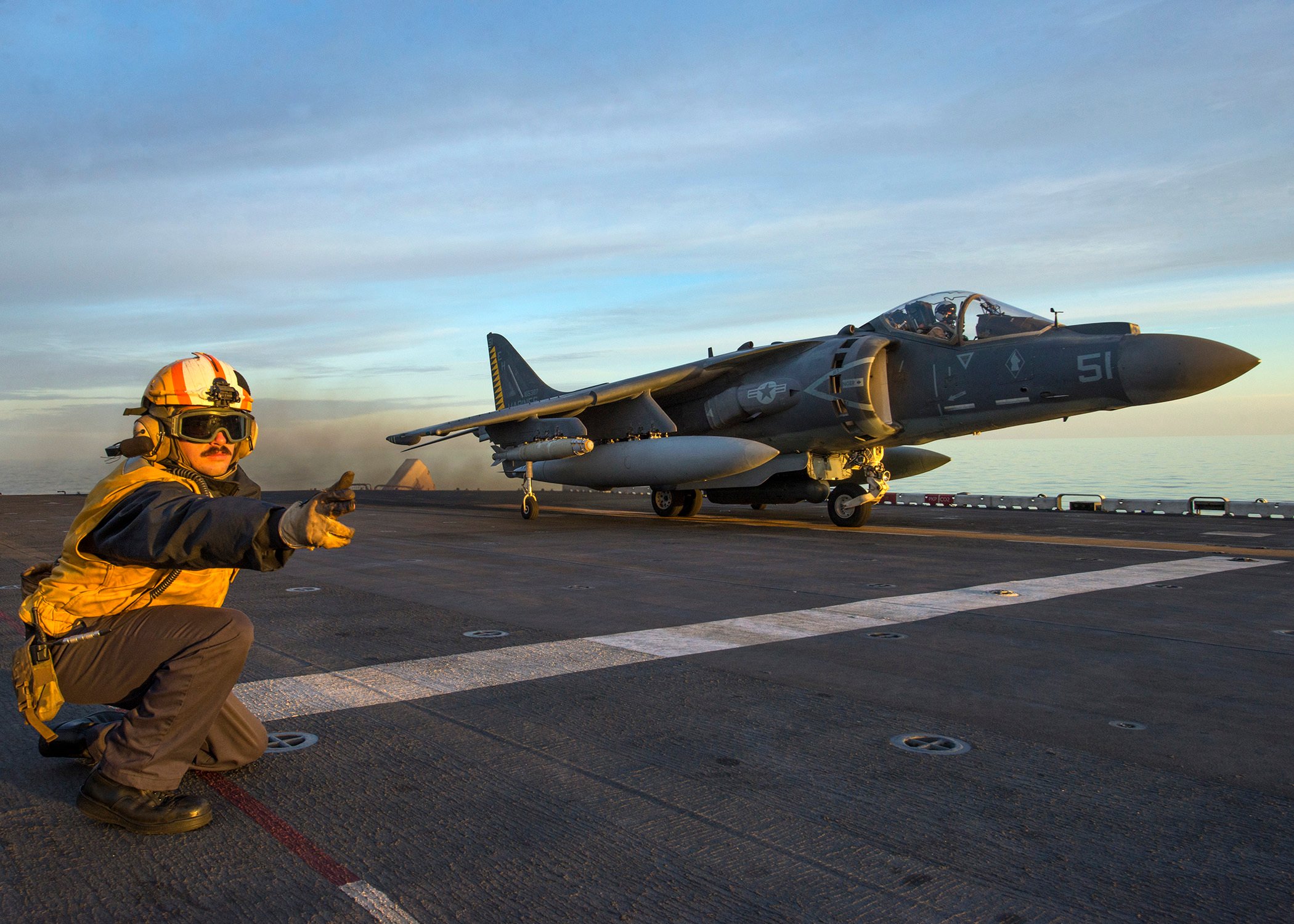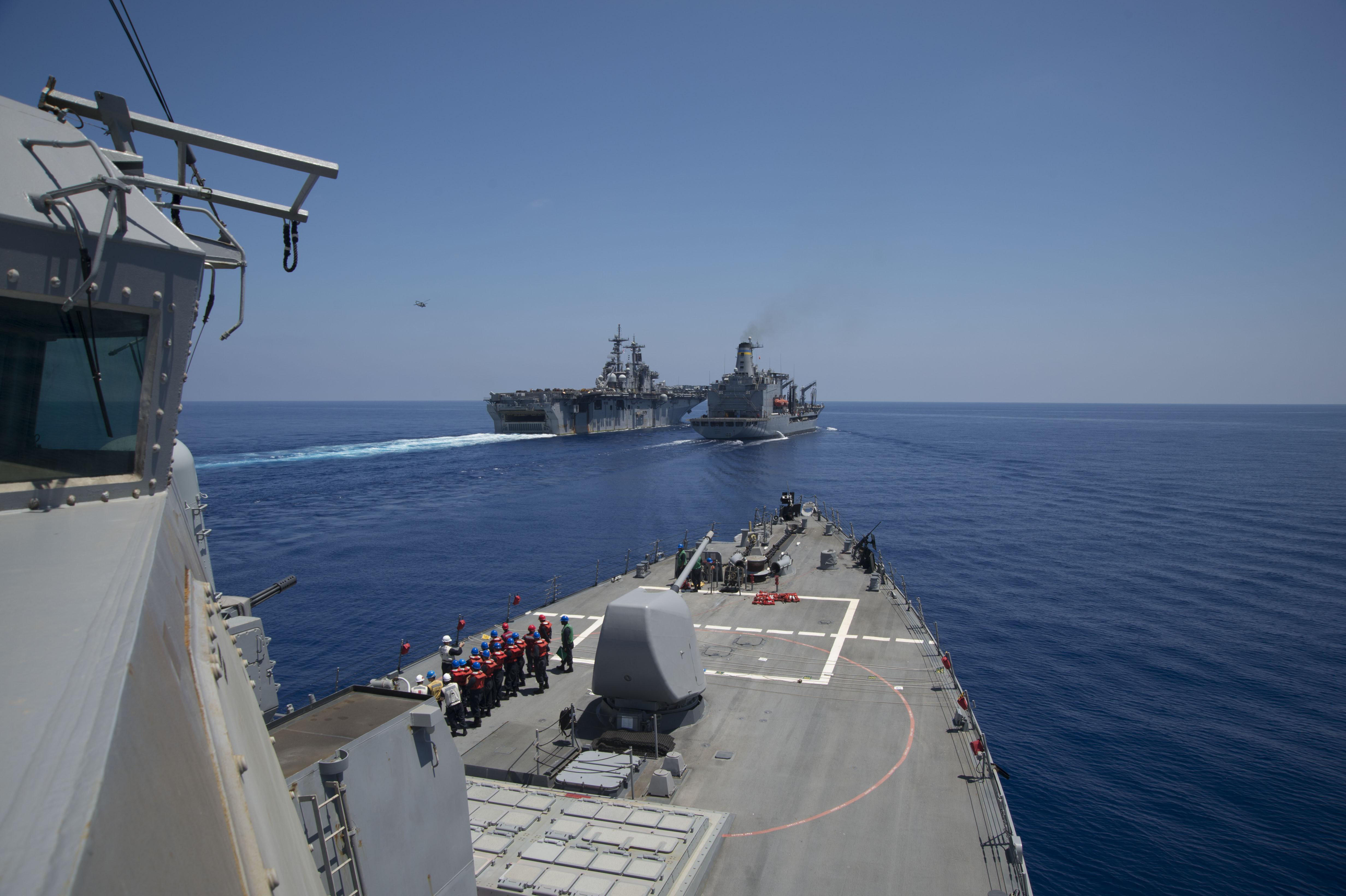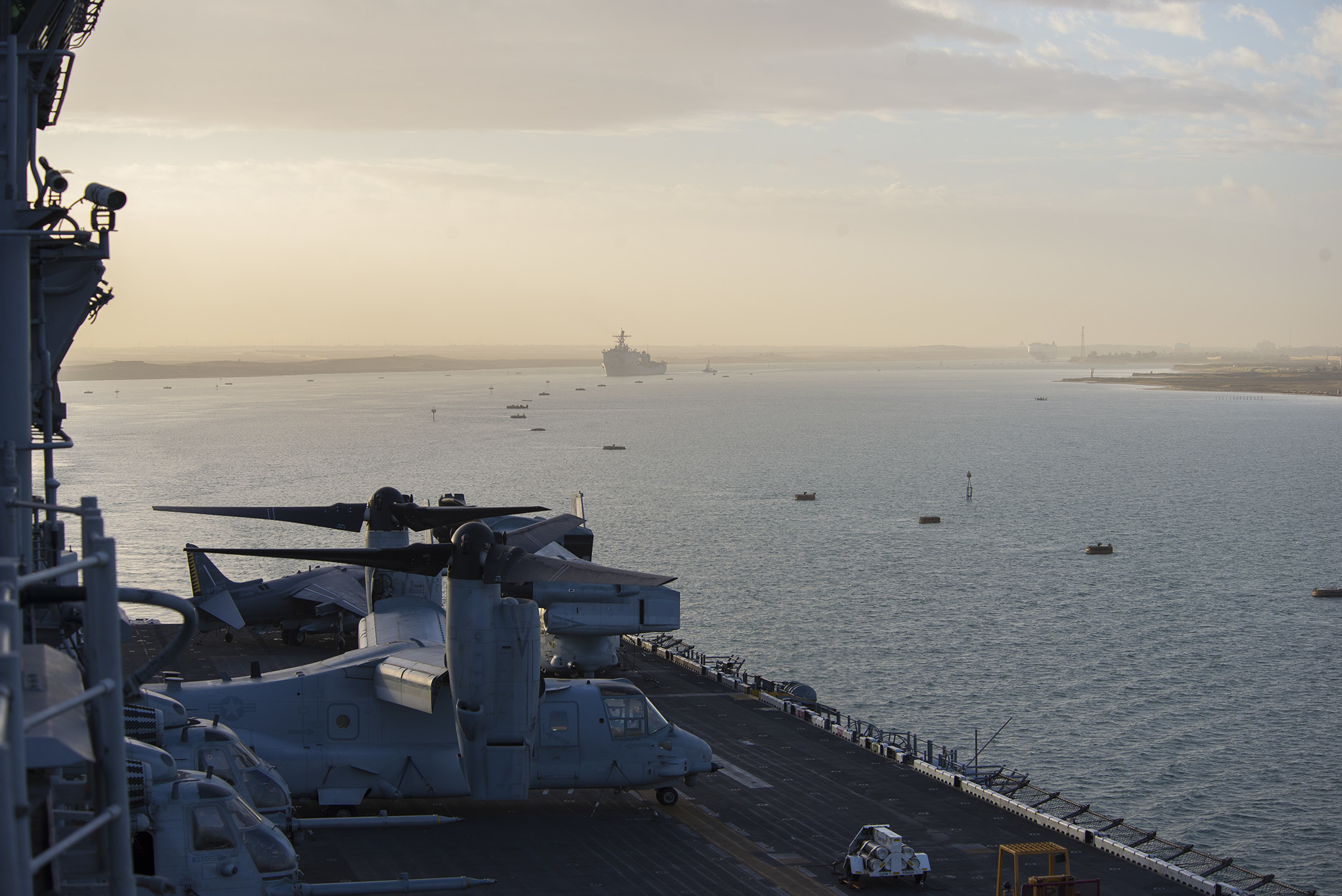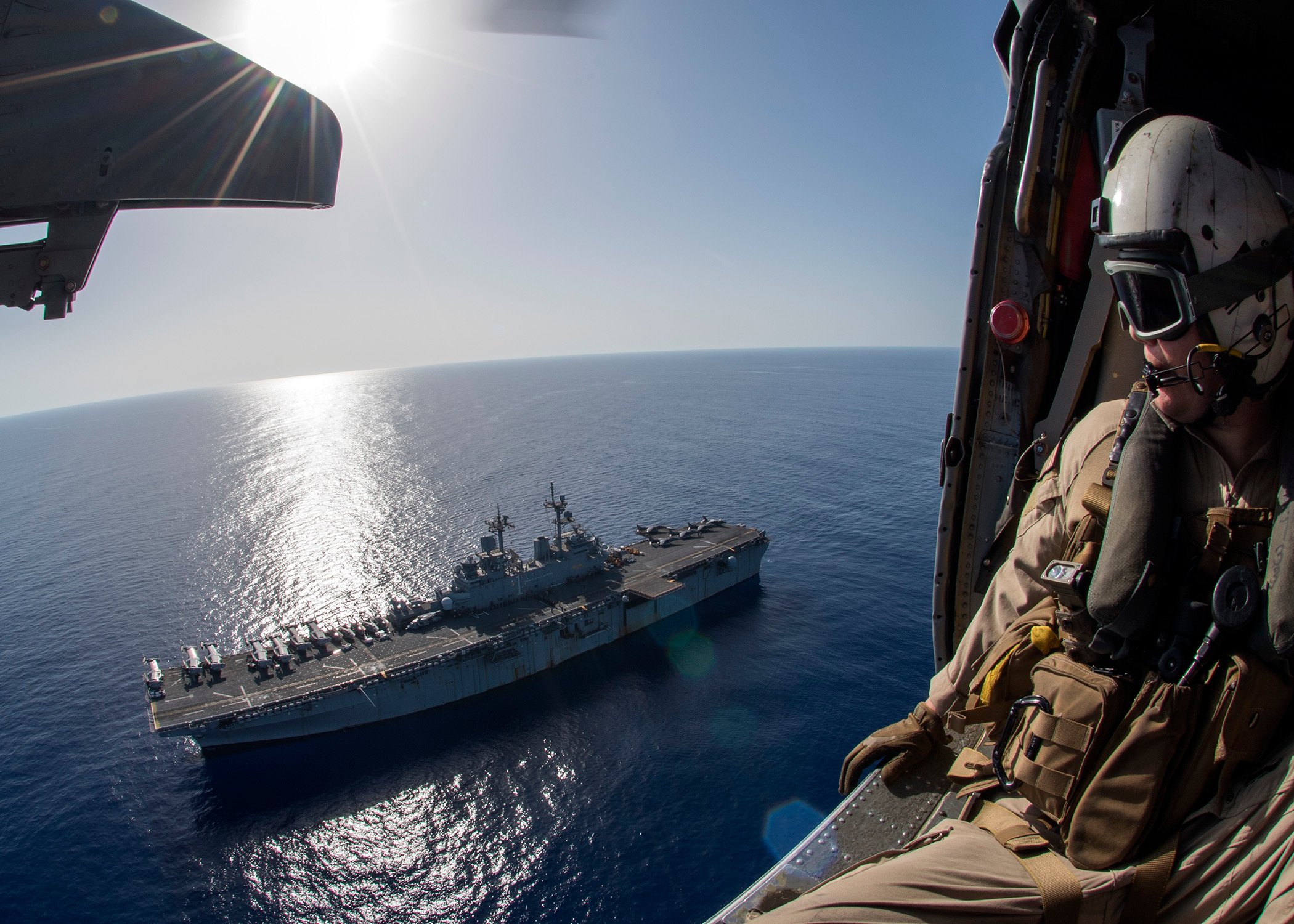
The Wasp Amphibious Ready Group and 22nd Marine Expeditionary Unit have returned home from a six-month deployment that included conducting airstrikes against the Islamic State in Libya and supporting maritime security operations in the U.S. 5th Fleet area of operations.
The deployment was also the first for amphibious assault ship USS Wasp (LHD-1) in 12 years after the ship was sidelined due to its obsolete command and control system. In recent years the big-deck had been relegated to hosting F-35B Joint Strike Fighter developmental tests in local waters.
During the deployment, Wasp spent a significant amount of time operating with Arleigh Burke-class guided-missile destroyers USS Carney (DDG-64) to conduct airstrikes against Islamic State targets in Libya as part of Operation Odyssey Lightning, rather than operating with the rest of the ARG in traditional amphibious missions.

On Aug. 1 the Wasp ARG/22nd MEU was ordered carry to out precision air strikes against the Islamic State in Sirte in support of the Government of National Accord (GNA) forces fighting on the ground.
“Harriers and Cobras assigned to the USS Wasp have been used to conduct strikes, with the USS Carney providing over watch support,” a U.S. Africa Command spokeswoman told USNI News in September. A Navy official elaborated that while AV-8B Harriers dropped ordnance on targets and Carney shot illumination rounds from the destroyer’s MK 45 5-inch lightweight gun, which could not be done from the LPD and LSD that would normally accompany the big-deck amphib.
Wasp served in this role for 100 consecutive days before being relieved by amphibious transport dock ship USS San Antonio (LPD-17) on Oct. 23, according to Navy news releases. On Dec. 6 Libyan government forces claimed they liberated Sirte from the Islamic State, a news release today states.
“I’m very humbled by what we’ve been able to accomplish,” Wasp Command Master Chief Gregory Carlson said in the release.
“I have an overwhelming sense of gratitude for what these Sailors and Marines have done.”
While Wasp and then afterwards San Antonio operated with Carney, amphibious dock landing ship USS Whidbey Island (LSD-41) operated in the Persian Gulf, Gulf of Aden and elsewhere in the 5th Fleet area of responsibility.

The Marines were dropped off at Camp Lejeune, N.C., on Dec. 22 and the ships – first-in-class amphibs Wasp, San Antonio and Whidbey Island – are expected to return to Naval Station Norfolk in Virginia on Dec. 24. Wasp won’t stay there for long, though; rather than have a post-deployment lull in activity and focus on a ship maintenance period, the big-deck will begin to prepare for a move to Japan in 2017.
Wasp will replace USS Bonhomme Richard (LHD-6) as part of the Navy’s Forward Deployed Naval Forces in Japan, and Bonhomme Richard will move to San Diego – putting one more big-deck on the West Coast and one fewer on the East Coast, as part of the effort to rebalance towards the Pacific. Wasp has undergone modifications needed to support the new F-35B Joint Strike Fighter and will be the first ship to deploy with them in the fall 2017 timeframe. Next month Marine Fighter Attack Squadron (VMFA) 121 will relocate from Marine Corps Air Station Yuma, Ariz, to MCAS Iwakuni in Japan and will send six of its planes on Wasp for the first F-35B ARG/MEU deployment – a deployment that will be unique not only for its use of F-35Bs but also because it will be joined by three destroyers as part of an “upgunned Expeditionary Strike Group” construct.
In preparation for the move to Japan, the Wasp crew completed a certification validation during the deployment, which is usually used to certify a crew preparing to deploy on short notice. In the case of Wasp, the ship was deployed during the CV but was also preparing to head back out to sea for the transit to Japan and then go on a fall ARG/MEU patrol about eight or nine months from now. The CV assesses a range of tasks and missions, including navigation, seamanship, communications, explosive safety, search-and-rescue plotting, engineering, and damage control.

“We do certification validations on the rare occasion that a ship needs to get underway within a short time frame after deployment for events such as re-deployment,” Afloat Training Group (ATG) Tactical Mentor Lt. Cmdr. Michael Myers said in a Navy news statement.
“The fact that we completed CV testing phases while the ship was also doing real-world operations is unprecedented both for a ship and for ATG. We had to de-conflict with replenishments-at-sea, flight operations, and normal ship operations.”
“This crew did their jobs in amazing fashion during this deployment,” Wasp Commanding Officer Capt. Andrew Smith said in the news release.
“”They often had to do deployment certification drills part of the day and fight ISIL the other. Not to mention, we simultaneously carried out the massive day-to-day operations that are required to run a deployed Navy warship.”
“We went at least 14 weeks at a minimum of 14-20 hour days,” Master at Arms 1st Class Jeffery Martinez said in the statement.
“My crew is exhausted, but at the end of the day we passed, we got our recertification done. It required a lot of work and a lot of effort by my crew to get the job done, and I’m very proud of them. Now it’s time to go home and get some time off, some well-deserved liberty earned by everybody.”





